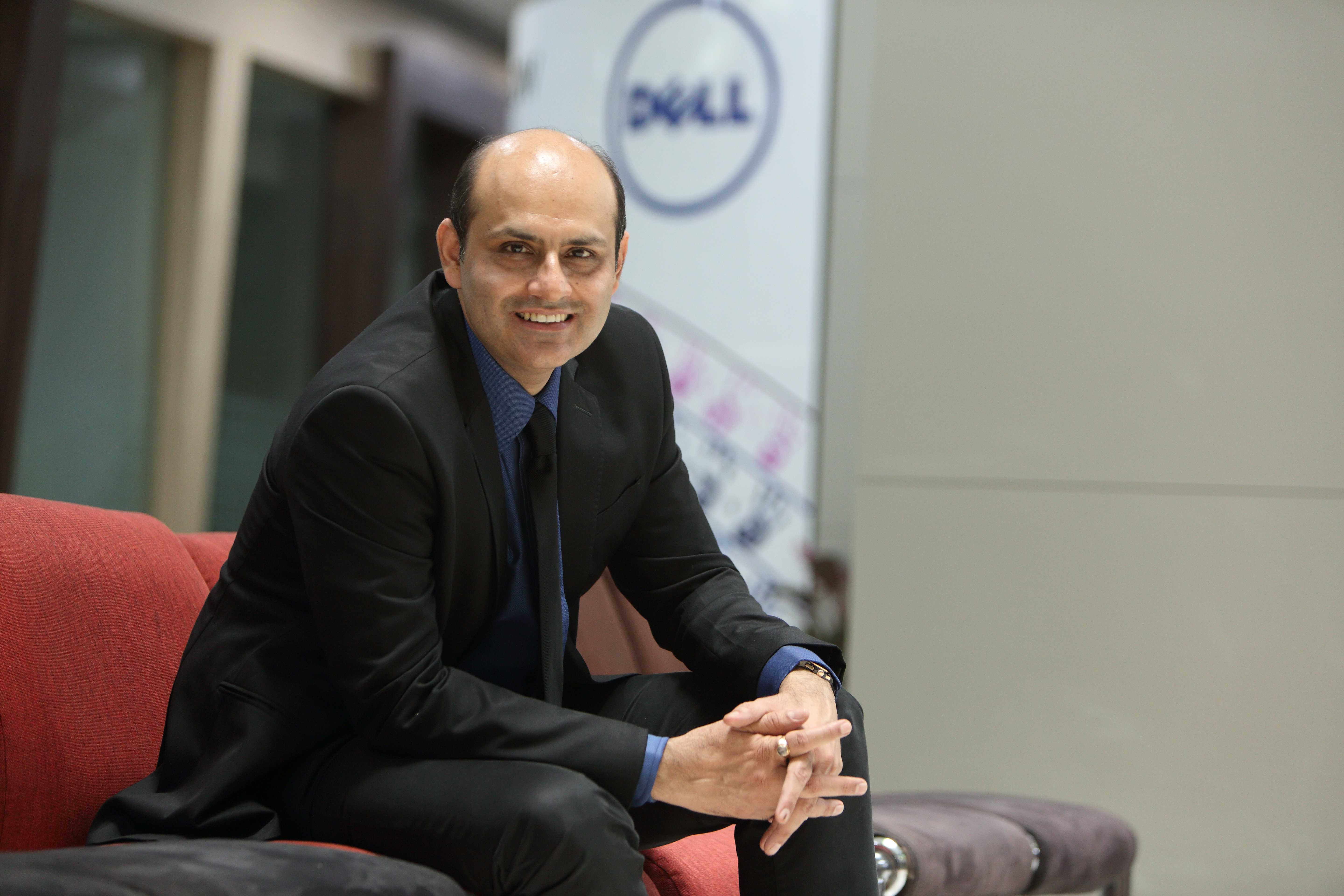The channel community will play a huge role for the new Dell EMC combined entity, as the firm looks to synergize the strengths of the two brands. Anil Sethi, Vice President – Channels, Dell EMC India, shares how the mantra of simplicity, predictability, and profitability will play a key role for the success of the company.
What has been the approach for integrating the channel community?
The story began in 2014, when Dell India thought through of how to transform its reach across the country. In the process, the channel becomes a good model to leverage – how can we go out and reach more markets and get new logos under our belt.
Historically, Dell was a direct selling company. We worked with partners but in a limited way. We had to redefine the plan in a promising way with the most important part being to build trust in the channel.
We created a channel program which was differentiated in several ways. It managed profitability, different LoBs (Lines of Businesses), and categorized partners. The community responded positively owing to the seriousness of the commitment with which we were engaging with them.
We also announced that we would work directly with 2500 accounts and the rest were open to channel partners. Within the 2500 accounts, if the customer was willing to work with any partner, we were open to that as well.
In 2016-17, the way Dell and EMC has come together, our channel commitment at the global level across the world is phenomenal. It will be an important year for the IT infrastructure market and especially Dell EMC’s position within it. At a global level, we have invested about $150 million, incrementally, in channel program
The objective of this investment is to ensure three things –simplicity, predictability, and profitability. These are the three tenets of our program. Furthermore, we have categorized our partners as Titanium Black, Titanium, Platinum, and Gold. The rest are Authorized Partners. A key highlight of the program is that it goes by the Line of Business. For example, we have clients (Edge to Core) and within clients, we have desktop, laptop, AIOs, workstations, thin clients. Then, it moves on to compute, network, storage. We have also categorized further by products.
Currently, we have about 4000 partners in India. Beyond the Metal tiers and authorized partners are Strategic Partners with whom we engage in a much deeper way. This includes System Integrators and those with more complex infrastructure handling capabilities. Their trainings are different and they are eligible for human capital investments.
What were the key challenges in integration? Please also share some key learnings?
We have made huge investments in manpower. Today, we have a strong combined team taking care of the channel business. With this, we are covering the top pyramid of the market with the help of Strategic Partners and our Account Executives who work together.
Then, we have the center of the pyramid (mid-market & SMBs) that we are addressing through another set of partners, including our Platinum and Gold partners. Here, we have our channel managers and specialists in areas like storage and compute, helping them address this market. In some of these accounts, we also have our Account Executives. Channel partners first identify the opportunity, channel managers get interlocked and the proposal goes through the organization where in Account Executives (AEs) and specialists are involved, if needed.
Following this, we have tier III & IV markets. Here, Dell EMC appointed executives are spread across to work with local partners. Lastly, we have stock and sell. Here, distributors stock our products and any partner can come and buy. It’s a fixed price and immediate delivery model. With this approach, we reach 4000 partners.
And this has really transformed in the new merged entity as well. It is important to see that we are able to deliver the message and communicate with partners in a meaningful way and they see their business seamlessly growing with us. We want to ensure that their experience is seamless and their business does not suffer at any point.
Was this approach been taken post integration of the two companies?
We devised this approach in 2014, and following the merger, we further improvised it. When I talk about tier III and IV markets, our approach has become more granular now. Our objective is to see how close we can get to our customers.
We are at a stage wherein we are making good investments in human capital as well as the channel community in order to ensure that we have wide coverage supported by specialists for the entire product line. To top it all, we have world-class trainings for our partner organizations.
What are some of the business implications on the partner business post the integration?
EMC was a completely channel driven company that required specialist partners to work with. The only challenge was on account movements, which we cleared immediately. They (EMC) had a preferred distribution model that we continued. We have introduced LOBI (Lines of Incumbency Program), wherein any partner dealing with the erstwhile EMC company with any customer, that customer stays with that partner.
Partners feared profitability would come down. We have ensured that our program don’t hamper that and we continually try to improve their profitability… Both the legacy organizations devised strategies so that relationships are not lost either at channel or customer level.
The channel organization cuts across the enterprise as well as commercial business of Dell EMC. This allows us to create an open field for partners. There is no concept like direct or indirect business. Partners can sell anywhere. As mentioned earlier, Dell used to manage direct accounts. Today, those too are open for partners. We adopted the best practices of both companies and created a valuable program for partners that has been well accepted and highly appreciated by the channel community.
How have these initiatives started yielding results?
Every new initiative takes time to deliver results. Our program is designed to support our strategic imperatives – – digital transformation, IT transformation, workforce transformation, and security transformation. We have already made important moves ahead in India since announcing this program and 2017 will continue to an important year for us and our vision for the company.
Are you looking at adding new partners?
We have a team called Emerging Channels that looks to bring new partners into the fold while we build and sustain the relationships we have with existing partners in the program. We want partners to work with us over the long term and we want to equip them with the skills and capabilities and relationships to stay competitive in the market.
What’s the focus on enablement and reducing go to market time to customers
We are very focused on training, be it face-to-face or webinars. These training modules are not just for external stakeholders but also internal teams. For reducing the go-to-market time for our customers, we have specialized resources that can help you configure faster; we have implemented a Smart Pricing concept; and along with the faster configuration, we’re able to sooner give a quote to our customers. We have specialized teams in all the core areas, be it storage, compute, network followed by Smart Pricing concept, and we have Insight Engine that does a great job. Through our MDF (Market Development Fund), partners are now involved in the demand generation exercise. Instead of passing leads to them, we provide them with funds and want them to provide returns on investment here. It’s all about execution now after having put in place the strategy along with our channel partners.














